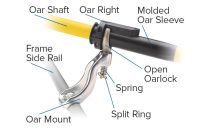Due to future TV deals and additional revenues, the .5M cap is estimated to grow to around million per year over the next 10 years, causing an even greater gap between the P4 and their mid-major counterparts. The NCAA provided a look into the future of revenue-sharing payouts to student-athletes by looking at the Power-Four (Big […]

Due to future TV deals and additional revenues, the .5M cap is estimated to grow to around million per year over the next 10 years, causing an even greater gap between the P4 and their mid-major counterparts.

The NCAA provided a look into the future of revenue-sharing payouts to student-athletes by looking at the Power-Four (Big 10, Big XII, SEC, & ACC) conferences House v. NCAA legal settlement and estimating the revenue sharing to student-athletes using 2025 figures by conference, by sport. These estimates do not include The Department of Education’s Office for Civil Rights (OCR) recent guidance that there must be an equitable distribution of NIL funds between men’s and women’s sports. It has not been determined if the same NIL principle will apply to revenue-sharing.
These are estimates of the amount of revenue-sharing a school could distribute to its athletes for the 2025-26 fiscal year assuming each school limits revenue sharing to 22% of its annual athletic department revenues – this is the percentage used to arrive at the initial annual cap. However, a P4 school can elect to share any percentage of its athletic revenues within any of its athletic programs as long as the total payout does not exceed .5 million annually. Once again, future Title IX guidelines may direct schools to redirect funds to women’s teams and reduce the men’s payouts as well.
Interesting times are ahead…
Football (of course) leads the way with a payout of almost .8 million which equates to about 0,000 per player. Men’s basketball players, on average, would receive 8,000 each, and women’s hoops players receive k. The payouts drop precipitously from there.
In the short term, many Denver coaches could argue the benefits of a DU degree, with the exception of basketball and hockey, where the projected gap is likely to impact recruits’ college decisions. Though hockey has its own advantages – namely being the best program in the country with the most national titles of all time and the fact that they’re sending multiple players to the next level every year. And David Carle would surely tell you that any player making his collegiate commitment based on these revenue-sharing figures would not fit with Denver’s culture anyway.
At first glance, Denver looks relatively safe with the exception being basketball and men’s ice hockey. DU does not compete with P4 programs for most basketball players but is at risk of losing young talent that blooms to more highly funded programs. From a purely financial perspective, the DU hockey program will almost certainly be disadvantaged in recruiting players against the Big 10 and new NCHC member ASU.
Generally, with one exception, DU’s premier sports under this potential methodology look relatively safe – assuming, and it’s a massive assumption, there are no enormous Name, Image, and Likeness (NIL) disparities between the Power Four and Mid-Major programs.
How would the splits look for Power Four student- athletes versus DU’s menu of sports? Student-athletes payouts are estimated as follows: Hockey – k, gymnastics – k, lacrosse – k, soccer k, swimming – k, tennis – k, golf – .3k, volleyball – k. No figures for skiing and triathlon are shown, but those figures are likely negligible.
Starting with estimated 2025 figures and an estimated million payout to P4 student-athletes by athletic team (below):














